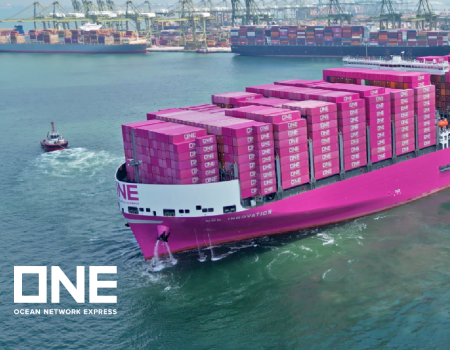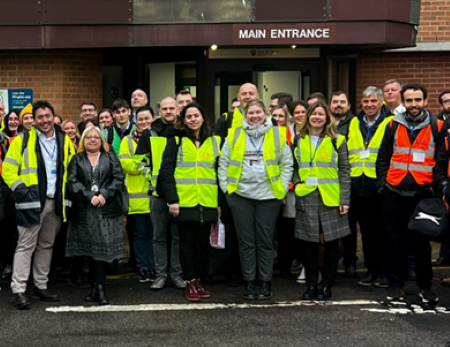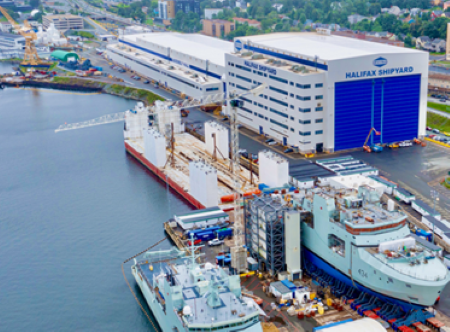Logistics is no longer just about the flow of physical goods, but about the flow of information, says Simon Clark, CargoWise Vice President Business Development, Europe.
Global competition and shrinking margins may continue to squeeze the logistics industry, but many businesses are sitting on a resource with huge value—their data.
The concept of big data isn’t new, it’s been a much-hyped topic for a few years, but it’s now matured to a level that is creating real-world results. Based upon raw data sources rather than pre-processed information formed from preconceived conclusions, big data provides the added element of foresight beyond anything mere management reporting or advanced analytics can provide.
Until recently, we’ve only had the ability to drill into the information held within the sphere of our own organisations. Now, with the exciting possibilities offered by big data, you have game-changing access to information both upstream and downstream of your operation. Vast quantities of data can be analysed at lightning speed to identify patterns and trends that translate into objective predictions. These insights can be harnessed to create more streamlined operations, heightened customer satisfaction and future profitability.
Getting your head around big ideas
Let’s look at big data in operation from an example we can all relate to—grocery retailing. We tend
to gravitate to a favourite supermarket and there’s a number of reasons that could contribute to this.
It could be the location, the availability of parking, the product range, the easy payment checkouts or even the café next door? Whatever your answer, it’s highly unlikely that you keep going there just by chance and is probably due to a complicated mix of all these factors, and more. A single visit to the supermarket may not reveal much, but patterns that appear from repeated visits can reveal a lot of valuable information. But how can this information be recorded and measured?
Your favoured supermarket will no doubt have offered you a loyalty card which you think of as a reward for your allegiance to the store. In reality, it’s a conduit to a wealth of information on your shopping habits. It tells the supermarket what time of day you shop, the products you buy, how far around the store you walk, how you pay, if you prefer offers or if you buy exclusives—an ever growing picture of what kind of shopper you are that’s been built from reams and reams of valuable tell-tale data.
It’s clear that this data will reveal a lot about the shopping habits of a single shopper, but when you collate the data from store- or nation-wide campaigns, the quantity and quality of this information can be used to create distinct strategic advantages.
The patterns that can be gleamed from this mass of data can be used by the store to give exactly what their customers want, where and when they want it, promoting particular products strategically to grow their market share. And while all this was happening, you received a few coupons which made you happy enough to go back to spend even more money and give them more data!
Now, let’s look at the value of data in the context of the logistics sector.
The difference between management reporting and big data mining
The evolution of data mining began with management reporting, expanded with analytics capabilities and has moved further again with the onset of big data. Management reporting draws on data from within the sphere of the business—which is not inconsiderable in itself given the proliferation of sources—but reveals only a simplified snapshot of business performance.
However, technology advances in the logistics field are enabling logistics providers to record and interpret much deeper and more revealing operational information. The latest smart and mobile technologies are allowing organisations to exponentially increase the quantity, quality and timeliness of data they can receive. We’ve come a long way from static barcoding, as all manner of chips, RF tagging and sensors become embedded in everything that moves. People are no longer tied to paper forms and cumbersome spreadsheets; data capture has expanded across everything from sign-on glass, hand-held devices to powerful smartphones and tablets that allow in-field tracking, quoting and invoicing. We can now capture information from all kinds of sources and use it to discover where valuable business-wide improvements can be made.
Logistics organisations that are embracing the latest in technology and cloud-based management systems in their operations are able to interrogate their amassed data for great reward.
Building the big picture from big data
So you have the tools to collect all this data, but what use does it have? How data is rationalised, understood and visualised makes a huge difference to how benefits can be achieved and strategies defined. You need to be able to do more than analyse your own silo of information.
Big data allows you to identify patterns that in turn will supply powerful insights. Technology’s processing power can be harnessed to break the boundaries, to pull data feeds from all freight forwarding, brokerage, customer and government agency touch points before, and after, your link in the logistics chain—and then look even further into influences such as weather, traffic and currencies.
The core to why the big data phenomenon is transforming businesses around the world, and why our industry members need to get on board, is its objectivity. Opinion, emotion and internal politics can be removed from the decision-making process. Management decisions can be made on more than past figures and a gut feel for the future. Judgment and experience are still crucial to the setting of parameters and the search criteria, but the outcomes are cleanly enumerated.
Powerful insights
Those embracing big data have seen the potential in being able to drill into what it tells them: the ways their clients book jobs; peak booking times; customer feedback and satisfaction, via surveys and social media feeds; repeat business and rewards for positive behaviours; seasonal trends by product and trade lanes; payment cycles across fiscal periods and service levels.
With an integrated management system and big data tools working to your advantage, you can pre-empt the effects of trade and legislative disruptions and have complete visibility into your assets, people, customers and partners. Big data then allows you to investigate new initiatives and their outcomes. For example, the owner of a distribution hub extends his warehouse in prospect of expanded business. If, in the short term, they make the decision to diversify into using the spare space as a self-storage business, what’s the total effect across the organisation?
Being able to look up and downstream to create value can be seen in the physical movement of goods from one warehouse to another. You can see the ordering instructions with analytics, but if you broaden your view upstream you may be able to see other patterns that will allow you to collaborate with the warehouse—improving the way they pick or the quantities of product stored, for instance.
If the number of orders is budgeted to double, what makes you think that will happen? Predictions, from maintenance scheduling to capacity planning and even the creation of new partnerships to fill gaps in your service offering, now have a new level of accuracy.
Taking advantage of opportunities and managing change and business uncertainties is now within reach. You’ll have greater control, less disruption and total flexibility.
Picking your weaknesses
Data is also valuable in spotting weak points in the current processes occurring right now. Every process within the business can be streamlined, taking into account not only internal parameters but external factors. It’s all well and good to be able to use barcoding to pick and pack and to have your driver seeing all the order information on a hand-held device, but it all comes to nought if the truck gets stuck in traffic because you haven’t got automatic traffic flow information feeding into the driver’s systems.
If you decide on a strategy and further down the line you get thrown data that identifies areas that are failing, then you’ll need to be prepared to act, to stop and make changes to minimise the impact. The upside is, you’ll know it’s not working before real damage is done and you can keep tweaking ideas until you find success.
People have failed in the past because they’ve based strategies on old “reliable” information rather than what they don’t know—the bigger picture. Big data allows you to analyse data from outside your business, to spot trends from raw unstructured data, and then make sense of it.
The advantages you gain from these insights—speed, responsiveness, cost savings and profitability—mean you’re no longer scrambling to catch up and are now one step ahead of the game. For those in the logistics sector wanting to secure a profitable future based on numerical evidence and insights, working from big data is the way to go.
It’s all about the customer
Big data analysis and the resulting strategic modelling will have a profound effect—beyond day-to-day operational efficiencies—in creating new, sustainable businesses with a customer-centric focus.
Calculated predictions made from the insights and manipulation of big data are vital to the development of sound sales and marketing strategies and targeted promotional activities. The analysis of individual customer’s buying patterns, or groups of clients, allows you to create customised pricing and new services.
Being able to bring constructive ideas to the table allows you to get more services into the client: you can more easily adjust to their service expectations. With highly responsive service levels, you’ll have the ability to lock in happy customers.
Measuring success
It’s great to have strategies and think they’ve been successful but how do you actually set the parameters for measurement?
Current reporting is largely limited to financial justifications for changes made: did that strategy make any money? There’s no real analysis of how the shape and flavour of the business has changed. Did you make money as a short term gain but lose some of your best people because they didn’t like the new working environment? How can you use data to better measure success outside of the parameters of simple profit?
The most important thing is have your own information chain in order. The value potential of big data will only come from quality information that arrives in real time. The old adage of rubbish in, rubbish out will apply here as everywhere!
Before being able to feed into any big data modelling tool, you need to have your business operating effectively on a single-platform supply chain management solution. If you’ve got 25 different systems, you’ve got 25 feeds into your data repository to maintain—and that’s before you even look at external feeds. An integrated management system is crucial to reducing the feeds to one touch point between you and your data.
You need a system that’s able to manage the massive scale of today’s data flows that has powerful business-intelligence capabilities to provide ongoing operational reporting. Newly introduced database query tools and EDI capabilities are adding phenomenal speed to the process of getting information from an integrated CRM, financial and operations system into the data repository. These real-time database query tools reflect the dynamic nature of the information flow and are used to clean and refine your data sources.
The big data mindset
The adoption of big data techniques requires one thing: an acceptance that change is the norm. The provision of information in real time means that the decision making process changes forever—you’ll need to be as adaptable as your IT infrastructure.
It may be difficult to move beyond the transactional approach traditionally taken by the logistics sector to a data-driven mindset, but there’s no big risks in switching to a big data approach. Instead, big data mining brings valuable insights and big opportunities for logistics providers seeking the competitive edge.







